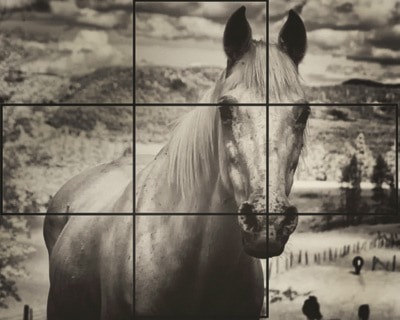“Photography is not like painting. There is a creative fraction of a second when you are taking a picture. Your eye must see a composition or an expression that life offers itself to you, and you must know with intuition when to click the camera. That is the moment the photographer is creative.” I included that quote by famous French photographer, Henri Cartier-Bresson, because he used the word “composition”, and it is that word and how it is currently being used that I have been recently thinking about.
The word composition gets thrown around a lot when discussing photographs. I’ll read forums where responses to posted images might say something like, “great capture, good composition,” or sometimes, something as meaningless as “I love your composition”.
I know the posters don’t actually mean composition as a photographic technique. I think it has just become an alternative word that means “picture”. Modern photographers seem to hesitate referring to a photograph someone has posted to an online site as a picture. They want a more modern word, and I guess using the word “composition” instead of “picture” has become that word.
With that in mind, when a young photographer said to me, “I don’t really know a lot about photography, but what I do know is that I am really good at is composition.” That was one of the few times I have been left speechless.
Photographic composition is defined as, “the selection and arrangement of subjects within the picture area.” And unlike those who replace the word picture with the word composition, I use composition and compositional guidelines to help me enhance a photograph’s impact.
Photographers are limited by the actual physical appearance of the subjects they are photographing, and depend on camera position, the perspective created by different lense’s focal lengths, and the elements that make up a picture to communicate to viewer’s what they saw when they made the photograph.
I think about what is important and how I want to arrange my composition, and I consciously subtract those elements that I think are unimportant or distracting. When setting up a composition I usually think about and apply the ‘rule of thirds’ wherein we divide the image into nine equal segments with two vertical and two horizontal lines. The rule of thirds says that you should position the most important elements in your scene along these lines, or at the points where they intersect, and by doing so, adding balance and interest to one’s picture.
I looked up composition online where there are page after page of composition tips. I decided I’d add my own, “apple technique to proper picture making and composition”. Here goes! One is driving along and sees an inspiring scene. Don’t just point the camera out the car window!
1. Stop the car.
2. Get out.
3. Leave the camera in the camera bag.
4. One should get an apple and eat it as one looks at the inspiring scene. Think about what is likeable about it, and make some choices as to how one would compose, or arrange, the features within the picture area one is photographing. Photographers should ask; what would someone like to say about the scene to the viewer?
5. Finally, go back to the car, get the camera, and make the picture.
Elliott Erwitt, American, documentary photographer wrote, “To me, photography is an art of observation. It’s about finding something interesting in an ordinary place… I’ve found it has little to do with the things you see and everything to do with the way you see them.”
These are my thoughts for this week. Contact me at www.enmanscamera.com or emcam@telus.net. Stop by Enman’s Camera at 423 Tranquille Road in Kamloops.
I sell an interesting selection of used photographic equipment.
And if you want an experienced photographer please call me at 250-371-3069.
